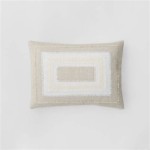Coastal Room Decor Ideas: Bringing the Seaside Home
Coastal room decor evokes a sense of tranquility and serenity, reminiscent of seaside living. It aims to capture the essence of the beach with natural materials, light colors, and nautical accents. Implementation of coastal decorating principles transforms a room into a relaxing retreat, irrespective of its geographic location.
This article explores various methods and elements to effectively integrate coastal decor into different rooms of a house. It provides insights into color palettes, furniture choices, textiles, and decorative accessories that contribute to achieving a cohesive and aesthetically pleasing coastal ambiance.
Color Palettes Inspired by the Sea
The foundation of any coastal room design lies in its color palette. The most successful coastal palettes draw inspiration directly from the ocean, sand, and sky. The use of predominantly neutral colors is essential for a calming and airy feel typical of coastal design.
White, in its various shades, including off-white, cream, and ivory, forms the core of the palette. White reflects light effectively, creating a bright and open atmosphere. It serves as a versatile backdrop against which other coastal elements can stand out.
Blue, representing the ocean, is another critical color in the coastal scheme. Light blues, such as sky blue, robin's egg blue, and aquamarine, are favored. These shades evoke a sense of calmness and serenity. Darker blues, like navy and deep sea blue, can be used as accents to add depth and contrast, but sparingly to avoid overpowering the lightness of the overall design.
Sandy beige and tan, inspired by beaches, provide warmth and grounding to the color scheme. These colors work well for flooring, furniture upholstery, and wall paint, creating a natural and earthy feel. They complement the blues and whites, balancing the cool tones with warmer hues.
Green, mirroring the coastal vegetation and sea glass, can be incorporated in muted or soft shades. Seafoam green and sage green provide a subtle pop of color without disrupting the overall calming effect. These greens can be introduced through accent pillows, artwork, or decorative plants.
To add visual interest, subtle pops of coral or blush pink can be incorporated to mimic the colors of seashells and sunsets. These warmer tones provide a gentle contrast to the predominantly cool color palette, adding a touch of vibrancy without overwhelming the space.
The effective use of these colors in varying proportions is crucial. Typically, white or off-white should dominate, with blues and beige acting as the primary accent colors. Greens and corals should be used more sparingly, serving as secondary accents to enhance the overall coastal theme. The goal is to create a harmonious balance that evokes the feeling of being by the sea.
Furniture and Materials: Natural and Weathered Elements
Furniture selection plays a significant role in establishing a coastal room's aesthetic. The ideal furniture pieces are often characterized by their natural materials, relaxed silhouettes, and weathered finishes. The focus should be on pieces that are comfortable, functional, and visually appealing within the context of a coastal environment.
Wicker and rattan furniture are quintessential elements of coastal design. These materials provide a natural texture and a relaxed, informal feel. Wicker chairs and sofas, often paired with comfortable cushions in light-colored fabrics, create inviting seating areas. Rattan headboards and side tables can also be incorporated into bedrooms to enhance the coastal theme.
Wood furniture, particularly light-colored woods like pine or driftwood, is another excellent choice. Weathered or distressed finishes further enhance the coastal aesthetic, giving the furniture a timeworn, beach-inspired look. Coffee tables, dining tables, and chairs made from reclaimed wood contribute to the overall rustic charm.
Upholstery fabrics should be chosen with comfort and durability in mind. Natural fibers like linen and cotton are popular choices due to their breathability and soft texture. These fabrics are also easy to maintain, making them ideal for coastal living. Slipcovers in white or light neutral colors can be used to protect furniture and provide a casual, relaxed look.
Metal accents, such as brass or chrome, can be incorporated to add a touch of sophistication. These metals work well for lighting fixtures, hardware, and decorative accessories. However, it is important to use these elements sparingly to avoid creating a stark or industrial feel. Aged or brushed finishes are preferred over polished finishes to maintain the coastal aesthetic.
Glass is another valuable material for coastal decor. Glass-topped tables and glass accessories, such as vases and lamps, help to maximize light and create a sense of airiness. Clear or lightly tinted glass allows natural light to permeate the room, enhancing the overall brightness and openness.
The arrangement of furniture should promote a sense of relaxation and ease. Avoid overcrowding the space and opt for a layout that encourages conversation and interaction. Positioning furniture to take advantage of natural light and views is also essential. The goal is to create a comfortable and inviting space that reflects the relaxed atmosphere of coastal living.
Textiles and Accessories: Nautical Accents and Natural Textures
Textiles and accessories provide the finishing touches that truly bring a coastal room to life. These elements add visual interest, texture, and personality to the space, reinforcing the overall coastal theme. The key is to choose items that are inspired by the sea and nature, while maintaining a sense of simplicity and elegance.
Curtains and window treatments should be lightweight and airy, allowing natural light to flood the room. Sheer curtains in white or light neutral colors are a popular choice, creating a soft and diffused light. Roman shades or blinds made from natural materials like bamboo or woven grass are also effective options, providing privacy while maintaining a coastal aesthetic.
Pillow and throw blankets add comfort and style to seating areas. Pillows in various sizes and shapes, adorned with nautical stripes, sea-inspired patterns, or solid colors, enhance the visual appeal of sofas and chairs. Throw blankets in soft, natural fabrics provide warmth and texture, creating a cozy and inviting atmosphere.
Rugs are essential for grounding the space and adding warmth underfoot. Natural fiber rugs, such as jute, sisal, or seagrass, are ideal for coastal decor. These materials provide a natural texture and a durable surface. Area rugs with subtle patterns or neutral colors can be layered over hardwood floors or tile to add visual interest and define specific areas within the room.
Artwork and wall decor should reflect the coastal theme. Seascapes, nautical charts, and framed shells or starfish are popular choices. Paintings or prints featuring sailboats, beaches, or marine life can also be incorporated. Mirrors, especially those with distressed or weathered frames, can be used to enhance the sense of light and space.
Decorative accessories, such as seashells, driftwood, and sea glass, add a personal touch to the room. These items can be displayed in glass jars, bowls, or trays, adding a natural and organic element to the decor. Nautical-themed figurines, such as anchors, sailboats, and lighthouses, can also be incorporated to reinforce the coastal theme.
Lighting fixtures play a crucial role in creating the desired ambiance. Table lamps and floor lamps with natural materials, such as wood or ceramic bases, provide soft and ambient lighting. Pendant lights or chandeliers with nautical-inspired designs can be used to create a focal point in the room. The use of dimmer switches allows for adjusting the lighting to create the desired mood.
Plants add a touch of life and freshness to the coastal room. Potted plants, such as ferns, succulents, or palms, bring a natural element indoors. Greenery not only enhances the aesthetic appeal of the room but also helps to purify the air. Arrangements of seashells, sand, and candles can be made to decorate any table and create a calming environment .
The careful selection and arrangement of textiles and accessories are critical for creating a cohesive and visually appealing coastal room. The goal is to create a space that feels relaxed, inviting, and reminiscent of the sea, while reflecting the personal style and preferences of the homeowner.

Coastal Living Room Ideas
:strip_icc()/101479104-2b8f79a374e84341a9469e79b5af9f69.jpg?strip=all)
Coastal Decorating Ideas

20 Gorgeous Beach House Decor Ideas Easy Coastal Design

Modern Coastal Decorating Ideas For Your Home Jane At

34 Beach And Coastal Decorating Ideas House Interior Design Rustic Decor Home

Wake Up At The Beach With These Coastal Themed Bedroom Ideas Tumbler Home

Modern Coastal Decorating Ideas For Your Home Jane At

Coastal Living Room Makeover Ideas Easy Inexpensive Changes Decorating Home Rooms

Coastal Living Room Ideas

20 Best Coastal Decor Ideas Modern Furniture And More
Related Posts







